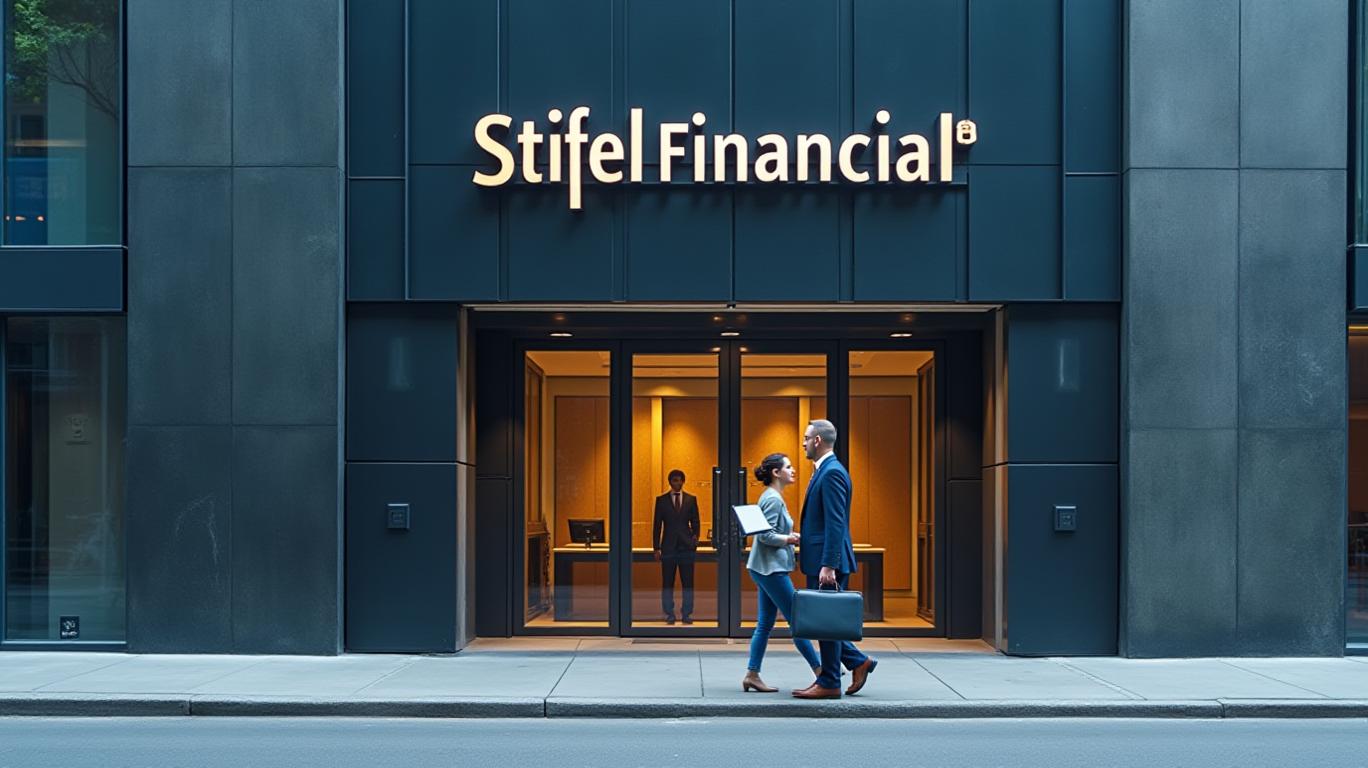Stifel Financial's Steady Climb: Can Resilient Asset Growth Outpace Volatility?
The financial services sector has long been a battleground for firms seeking to convert market turbulence into opportunity.
(NYSE:SF) has emerged as a contender, reporting record fee-based asset growth in Q1 2025 amid a backdrop of macroeconomic uncertainty and institutional indecision. While the company’s 11% year-over-year jump in fee-based assets to $190.545 billion underscores its strategic momentum, lingering questions about insider selling and mixed hedge fund sentiment threaten to overshadow its progress. Is Stifel’s growth story durable enough to warrant investor confidence—or is this a case of climbing a mountain with shaky footholds?
The Engine of Growth: Advisors and Assets
Stifel’s Q1 results reveal a deliberate playbook: acquiring top-tier financial advisors to fuel asset accumulation. The addition of 52 advisors—nine of whom were seasoned professionals—has injected fresh capital into its wealth management division. This strategy isn’t merely about headcount; it’s about productivity. As CEO Ronald Kruszewski emphasized, these teams are “expanding our reach while maintaining profitability,” a critical balance in an industry where scale often sacrifices margins.
The data is compelling. Fee-based assets in its Private Client Group surged 11% to $166.029 billion, aligning with the company’s broader trajectory. This segment’s resilience is particularly notable given the 5% dip in money market balances—a seasonal headwind Stifel attributes to shifts in “Smart Rate” deposits. Yet, the absence of meaningful month-over-month growth in April hints at a potential plateau. Investors must ask: Is this a temporary pause, or a sign of saturation?
The Risks Lurking Beneath the Surface
For all its strengths, Stifel isn’t immune to the sector’s growing pains. A $180 million legal charge—dragging down Q1 earnings by $1.16 per share—highlights the unpredictable nature of regulatory and litigation risks. Meanwhile, insider transactions paint a mixed picture. In the past six months, two executives, including Thomas W. Weisel and David A. Peacock, sold a combined $2.78 million in shares. While these sales are modest relative to institutional stakes, they raise eyebrows in an industry where insider confidence is a bellwether.
Institutional investors are similarly conflicted. Marshall Wace and AQR Capital surged their stakes by over 700% and 300%, respectively, while T. Rowe Price and Capital Research cut holdings by 55% and 25%. This bifurcated sentiment reflects broader market skepticism about Stifel’s ability to sustain growth in a low-interest-rate environment. The company’s net interest margin contraction, driven by “repricing lags,” adds another layer of concern for income-oriented investors.
Why Stifel’s Long Game Still Wins
Beneath the noise, Stifel’s fundamentals remain robust. Its $324 million in excess capital and a Tier 1 leverage ratio of 10.8% provide a fortress-like balance sheet, enabling share buybacks and strategic advisor recruitment even in lean quarters. The firm’s focus on “advisor productivity” isn’t just buzz—it’s a measurable metric. Each new team brings not just assets but recurring fee income, shielding Stifel from the volatility of commission-based businesses.
Moreover, the company’s diversified revenue streams—spanning wealth management, investment banking, and capital markets—act as a stabilizer. While trailing commissions dipped in Q1, client engagement rebounded post-quarter, suggesting temporary softness rather than a structural decline. CEO Kruszewski’s emphasis on “capital allocation discipline” is also a plus: with 9.2 million shares remaining in its buyback program, Stifel is primed to capitalize on dips in its stock price.
The Bottom Line: A Compelling, if Imperfect, Story
Stifel isn’t a perfect investment. Legal overhangs, insider caution, and margin pressures are valid concerns. But its ability to grow fee-based assets at a double-digit clip while maintaining a fortress balance sheet positions it uniquely in an industry still searching for stability. For investors willing to look beyond quarterly noise, Stifel’s blend of organic growth, advisor-driven scalability, and defensive financials offers a rare combination of resilience and upside.
The question isn’t whether Stifel faces hurdles—it does. The question is whether its strengths outweigh the risks. On that front, the answer remains a resounding yes.
Investors who prioritize long-term wealth management exposure should take note: Stifel isn’t just climbing—it’s building a path for others to follow.

Comments
No comments yet